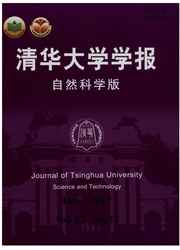

 中文摘要:
中文摘要:
锥束CT(CBCT)以其灵活的扫描和极低的辐射剂量在医学检查和局部组织成像中得到了广泛应用。为了降低其硬件成本、减少扫描剂量,CBCT可以采用探测器横向偏置的扫描结构,在保证合适的FOV(fieldofview)的同时减小所需的探测器尺寸。但是,这种扫描模式带来了投影数据横向截断问题,直接采用传统滤波反投影方法进行重建会引入较为严重的截断伪影和重建错误。该文针对这一问题进行分析,提出了一种投影数据加权预处理的重建思路和解决方案,在传统的滤波反投影方法中针对数据冗余区域进行加权处理,保证处理后投影数据的平滑连续及反投影系数归一。使用颌部数值模型进行了锥束CT三维投影和重建验证,对不同的探测器偏置截断情况进行了研究。实验结果表明:相对于全尺寸探测器,当探测器横向尺寸减小约30%以下时,该方法可以十分有效地降低探测器偏置导致的投影截断对重建的影响,重建结果与全尺寸探测器接近。该重建方法简单高效,针对部分偏心放置的平板探测器CBCT系统有着较强的实用性。
 英文摘要:
英文摘要:
CBCT (cone beam CT) scanners have been widely used in medical diagnosis and local tissue imaging because of low-dose and flexibility. To reduce the hardware cost and radiation dose, CBCT scanners always use off-center detector scanning geometry, which can keep a reasonable field of view (FOV) and use a smaller size detector. However, the projections are transversely truncated under this scanning condition, and reconstruction using conventional filtered back-projection reconstruction methods will lead to serious truncation artifacts and errors. A reconstruction method was developed based on projection pre-weighting to keep the correctedprojections smooth and continuous and the back-projection coefficient consistent. Numerical simulation was conducted using FORBILD jaw phantom with different scanning geometries and detector truncation conditions. CBCT projections were acquired and then reconstructed using the proposed method. The experimental results show that when the detector size is transversely reduced less than 30%, this method can acquire similar and excellent results compared with the FDK reconstruction results from a full-size detector. The method is easily implemented and highly efficient, which is feasible in an off-center CBCT system.
 同期刊论文项目
同期刊论文项目
 同项目期刊论文
同项目期刊论文
 The X-ray digital intraoral tomosynthesis (IDT) for 3-D imaging: system, reconstruction algorithm an
The X-ray digital intraoral tomosynthesis (IDT) for 3-D imaging: system, reconstruction algorithm an 期刊信息
期刊信息
